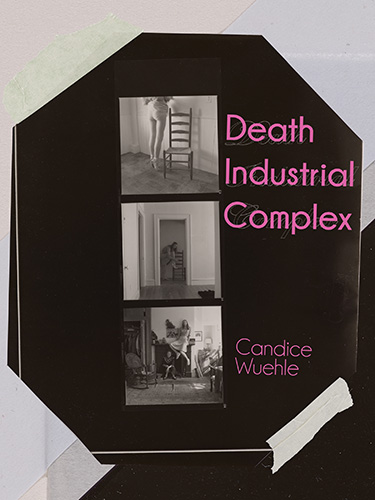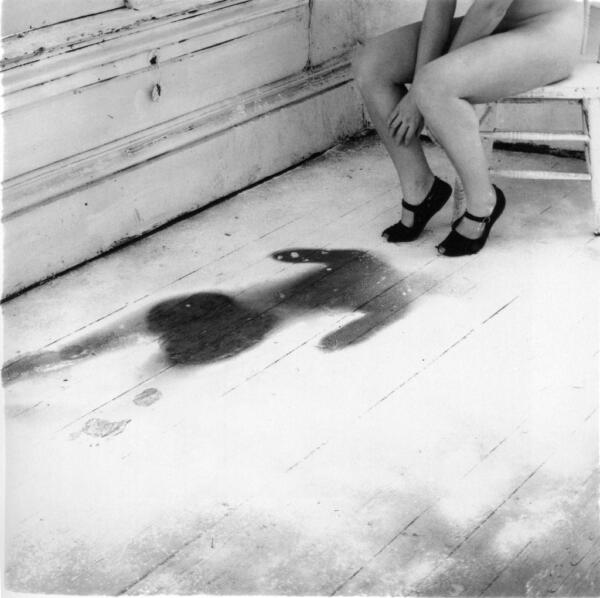
I was reading I am a Strange Loop by Douglas Hofstadter, a professor of Cognitive Science. In the book, Hofstadter explains feedback loops in audio and video and how never-ending spirals are built. I became stuck on a particularly mathy chapter in which he discusses patterns in prime numbers. Most descriptions were meaningless to me. I was getting impatient. I wanted to get to the part about the human brain being strange and loop-like. Refusing to skip ahead, though, I had given up on reading the chapter yet again.
Instead, I began Candice Wuehle’s Death Industrial Complex, a book of ekphrastic poetry responding to Francesca Woodman’s photography. I was immediately drawn in at part 0 when the speaker situates herself in an in-between world, where things do and do not exist and strange, even supernatural, things can happen. She writes, “I expect you/ to know I am alive. I expect you to/ know how to hold my heels as I hover.”
In the first poem she makes the sound of letters that do not exist. Light and language collapse in on each other. How can you capture light in words: “wingless.” Wuehle again makes “sounds not yet in this language.” She gives holes names, but we never hear those names. She says, “I can hear what I sound like in the future.” All of these examples point to a liminal space the author somehow has access to. Like Francesca Woodman’s photos, they capture blurs. The poems are like a magic trick, a disappearing act, an occultation dissolving in smoke, a fading into thin air, that shimmering second between real and beyond the pale, a departure, or a Gothic veil.

It’s also relevant, I think, that I was reading Keats at the time and loving how the title character Endymion flings himself down on the loamy ground again and again and cries about everything beautiful he encounters. Keats’ Endymion does not walk in this world, but through a haunting space of gods and goddesses. A space only the youth has access to. There is such a contrast between Keats’ world of green and golds and Wuehle’s, and Woodman’s, world of black, white, and sepia. Where Keats builds abundance and lush earthiness, Wuehle kicks up dust, playing in the stark, crumbling spaces photographed by Woodman. Bodies themselves become dust, floating in the air. She makes a “dust angel in ash and flour.” Both Keats and Wuehle write about beauty, and both books, I think, could be called grotesque masquerades.
In Death Industrial Complex, form itself begins to change. The text from other poems becomes ethereal and hovers on the page, overlapping text on text. A ghostly form hanging in the room. Mirrors show the same image in loops. There is a mirror inside of herself. “Mind,” “mirror,” “mouth,” and “memoir” crop up like key words, summoning ghosts. Or, perhaps, summoning Francesca Woodman’s ghost. A doubling, doppelganger effect.
And here, strangely enough, I found my looping. Wuehle’s speaker embodies the self-portrait “Talking to Vince” and speaks to Vince through Woodman, as if she is a medium. Spiraling begins, as words spiral in and out of the telephone wire and back and forth from Francesca’s stomach. The cord becomes umbilical. A few poems later, she asks if there is in fact something inside her stomach, growing. Spinning becomes a “Vertiginous birth.” Ominous and language-bound, she is lost in the angles and patterns. In “I Could No Longer//Could Not Play By Instinct” the speaker proclaims that she is a mathematician and the language she speaks in is forever spinning. Wuehle writes, “my heart must be a spiral/ shape no real endpoint.”